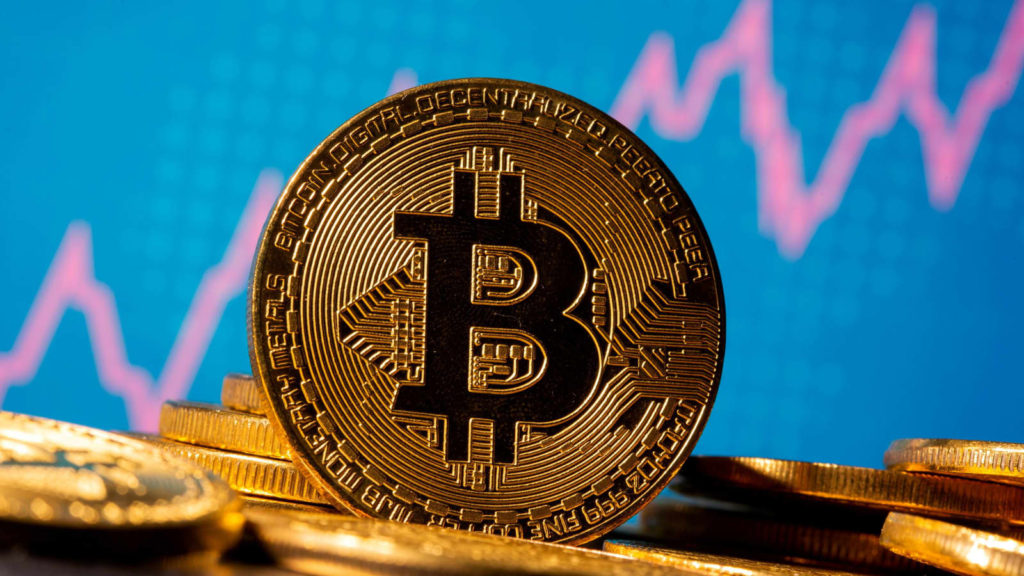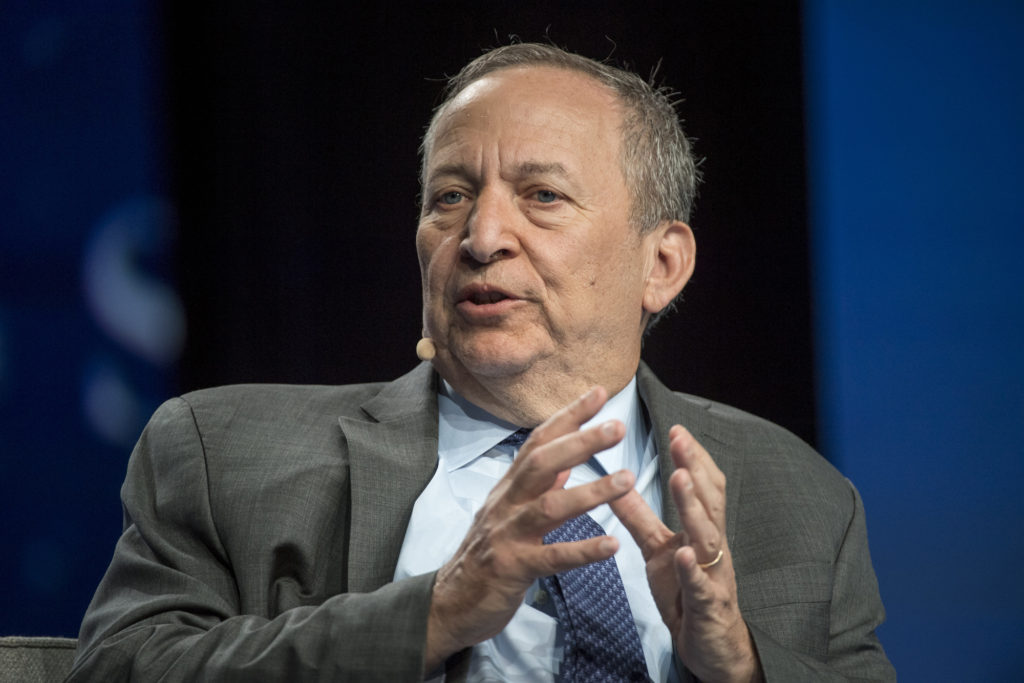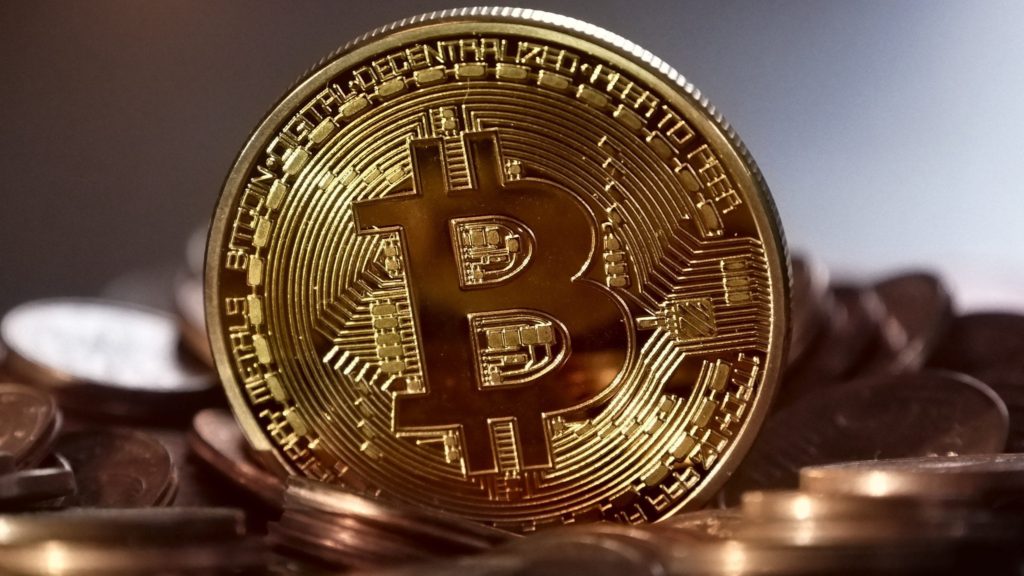While NFTs, or non-fungible tokens, have largely disappeared from mainstream media coverage in recent months amid the crypto market crash, many NFT projects are pressing ahead and fighting for their rightful place in the Web 3.0 ecosystem.
NFT trading volumes are a fraction of what they were – for example, trading on OpenSea plummeted 99% from May to August – but Music NFTs in particular nevertheless still have a promising future, as they are true collectibles and therefore have real value.
This contrasts to other NFT projects, such as the Bored Apes Yacht Club (BAYC), which are solely purchased as speculative investments and have little-to-no underlying value.
The Music NFT space is still in its infancy, but competition is already fierce, with a number of platforms and dedicated marketplaces being launched in the last two or so years.
With there being so many rival platforms for artists to release their NFT drops on, and collectors to scour in the hopes of finding a gem, it can be difficult to determine which is best.
So, we’ve ranked the three best and most exciting music NFT platforms, in no particular order…
Serenade
With offices in the UK and Australia, Serenade is at the forefront of the Music NFT space.
Serenade was founded by Australian tech entrepreneur Max Shand in mid-2020, and the project has collaborated with an impressive array of artists, including The Kooks and Super Furry Animals.
Earlier this year, they raised $4.2 million in a fundraise which Hugh Jackman and executives from the Warner Music Group participated in.
Their platform runs on Polygon – a Layer-2 Ethereum blockchain – which allows them to mint NFT collectibles using as little energy as possible. In fact, 197,000 Serenade NFTs would need to be minted to equal the carbon footprint of a single 12” vinyl, according to the company.
Shand, a music writer and venture capitalist, outlined how anyone can use their platform to buy “digital pressings” from their favourite singer or band.
“The sale of that digital pressing gives you a direct new revenue stream from fans and a relationship to your superfans that you can develop over time. It also allows artists to do things that have been either too expensive – such as a box set – or just not feasible,” he said.
At the moment, Serenade’s USP is they are the first chart-accredited NFT platform in the UK and Australia.
This means that NFT sales generated from their platform will count towards artists’ ranking on the charts – something that’s understandably very important to all artists, irrespective of what stage of their career they’re in.
TokenTraxx
Although a relative newcomer, TokenTraxx is coming in hot, moving from an MVP blockchain development in May this year, to a market-leading platform in just four months. This home of music-related digital collectibles has already surprised with innovative drops, which makes it a prime destination for discovery, buying and trading.
Headquartered in London and founded in 2021 by musicians, the all-star team of music and blockchain industry experts, including Miles Leonard, the renowned ex-Chairman of Parlophone Records and Warner Music and TommyD, the award-winning DJ and producer who’s worked with everyone from Kylie Minogue to Kanye West, is set to turn TokenTraxx into one of the loudest terminals in web3.
A look under the platform’s hood reveals a bigger agenda, one to financially benefit the entire music community by empowering it to choose and own the sound of a decentralised future.
Look out for the launch of Traxx Protocol, which will unveil web3 technology intentionally built for the music industry, creating a demand and supply asymmetry for third-party web2 and web3 properties.
By developing an entire ecosystem, TokenTraxx is emerging as the main stage for music in web3 – powered by TRAXX, already listed on both CEX and DEX platforms.
“I created TokenTraxx to unlock the true value of music for artists,” said TommyD.
“In a world where a streaming dominated music market has reduced the value of music to nothing, we are dedicated to shepherding the artist community into this new economy. We do this by applying a hands-on, white glove approach to artist campaigns and businesses. Our dedicated team of music industry professionals offer both insights, marketing & PR to create digital collectibles with real life value across the entire music ecosystem – from live gigs to merchandise to metaverse.”
TokenTraxx’s curator and collector-centric approach into the decentralised world of unleashed music is ready to uncover an infinite array of experiences for music consumers.
Async Art
Last but not least, we have Async Art. Founded in 2020 and based out of California, Async Art is another music NFT marketplace that is seeking to introduce the world to “21st Century Art”.
Like the other platforms mentioned in this article, Async Art allows artists to unlock another revenue stream by selling digital collectibles to their fans. On the other end, music-lovers can support their favourite artists – or up-and-coming singers or bands – by purchasing their NFTs.
While Async Art primarily caters to artists, it does also allow other, non-music NFTs to be minted. Furthermore, some NFTs minted on Async Art have even been sold at Christie’s, a leading British auction house founded in 1766.
At the moment, their platform doesn’t support fiat, so all NFTs must be purchased and traded using Ethereum, which may not be ideal for crypto novices. However, their support section has a step-by-step guide on how to buy some Ether and connect your wallet to their platform, so even fans who aren’t crypto-savvy won’t struggle to use this platform.
Overall, Async Art is a great music NFTs marketplace, with a great selection of collectibles and frequent new drops and collaborations, even during the recent bear market.
Follow Crypto Intelligence on Google News to never miss a story
It’s been a strenuous year for the crypto business. After hitting a high of more than $68,000 in November 2021, bitcoin has plunged to hover around $20,000.
But for long-term ETF investors, some experts advise to take crypto’s comedown in stride.
“If you’re going to do this right, then what’s been happening in the past nine months is totally irrelevant,” Ric Edelman, founder of Edelman Financial Services, told Bob Pisani on CNBC’s “ETF Edge” on Monday.
“If you’re investing for the next five to 10 years, this is just an ordinary blip in the marketplace, and you ignore it,” he added.
But with bitcoin coming off a nearly two-year low, the short-term temperaments are being met with a mix of positive and negative factors that are guiding where the crypto community goes from here.
“It’s a really dynamic moment in the market,” Matt Hougan, CIO of Bitwise Asset Management, told Pisani on Monday.
A massive technical upgrade in ethereum is a constructive force for the future of the world’s second-largest blockchain, Hougan said. A wave of institutional investors coming into the market, and an influx of venture capital activity are also forward-looking indicators for crypto’s future.
On the flipside, regulatory pressures from the Federal Reserve and the Securities and Exchange Commission are working against it.
“That’s creating this volatile market where crypto is going up and down and can’t quite figure out which way to go,” Hougan said. “And I think we’re probably stuck there, at least through September.”
Edelman explained that for institutional investors to engage with Wall Street firms, endowments and pension funds, regulatory and legislative rules need to be in place.
“The adults in the room recognize that regulation is a good thing,” Edelman said. “Right now, we have 1% engaging in crypto. You’re not going to get the other 99% until they have clarity on what the rules of the road are.
“We’re seeing new rules coming out from the Treasury, IRS, FINRA and from the Fed,” he said. “And from the SEC and CFTC. We’ve got over 50 bills in Congress right now. And all of this is very healthy.”
SEC Chair Gary Gensler has said the agency should have a major enforcement role in crypto, particularly for tokens. In a speech this month, Gensler sounded a warning signal to organizations he believes are violating existing securities laws, asking staff to possibly “fine-tune compliance for crypto security tokens and intermediaries.”
“I think there was a pretty direct threat against crypto trading venues – large-scale entities like Coinbase,” Hougan said. “They’re clearly on his horizon.”
In July, shares of the crypto firm tumbled after it was announced that it was facing an SEC probe into whether the platform offered unregistered securities.
“I’m happy to say it again and again: we are confident that our rigorous diligence process — a process the SEC has already reviewed — keeps securities off our platform,” said Coinbase’s chief legal officer Paul Grewal on Twitter.
Proposals for more SEC oversight of the crypto community are likely to be met with hostility from the community itself, although the agency has already taken steps to enforce its regulatory agenda.
In February, the SEC charged BlockFi Lending with failing to register the offer and sale of its retail crypto lending product. The firm agreed to settle the charges, paying a $50 million penalty and ceasing unregistered offers and sales of the lending product.
“A year from now, the large trading venues will be in the process of registering with the SEC,” Hougan said. “I think individual tokens, it’s a much longer term.”
Although the speculative assets have a challenging path forward, Edelman said the number of people who own cryptocurrencies continues to be a steadily rising figure.
“What’s interesting is that, despite the fact that [Coinbase is] down 70% from its high, the number of people who own it is unchanged,” he said. “Which means that those who wanted are not fazed by this.”
Beyond the crypto community, rates of adoption from large investment firms demonstrate that digital currencies are being embraced by Wall Street, Hougan said.
“Blackrock and Schwab coming in reinforces to everyday investor that bitcoin is not going away,” Hougan said. “I think that’s now been settled. It’s now how big is that future.”
Follow Crypto Intelligence on Google News to never miss a story
Excitement for the world’s most global blockchain and crypto conference is at its peak as Blockchain Economy Dubai Summit’s date is approaching. Blockchain economy events are attended by famous TV and film stars, pop stars, ministries as well as industry leaders such as Blockchain.com, MicroStrategy, KuCoin, Crypto.com, Bitmain, Ledger, Kraken, Gate.io, BitMex, OKX and many more since its very first 2019 edition.
The summit’s upcoming fifth edition will be proudly hosted in Dubai, the largest crypto hub in the world. The event is set to be held on Oct. 4 and 5, 2022 in the prestigious Le Meridien Dubai Hotel and Conference Center. According to the announcement that was made on Blockchain Economy’s Twitter account, attendees from more than 63 countries are already headed to Dubai for the event.
Blockchain Economy provides unparalleled networking opportunities to its participants, as it gathers not only crypto companies, but also government officials, institutional investors and industry giants such as Microsoft, Meta, Deloitte, AWS (Amazon Web Services) and many more.
While part of the attendees will have a chance to listen to the mind-blowing panel discussions and keynote sessions about Bitcoin adoption, professional trading techniques, investment strategies, building on Web3, DeFi, the Metaverse, NFTs, usage and implementation of blockchain technology in various industries and many other key topics on the main conference stage, others can visit the participating companies’ booths, experience the various entertainment activities available, explore the NFT art gallery and build new partnerships in extensive networking areas.
The conference’s speakers include:
- Vas Modinos — solution lead at Microsoft
- Sumit Gosh — founder and CEO of Chingari
- Alena Afanaseva — co-founder and CEO of BeInCrypto
- Ivan Liljeqvist, a.k.a. Ivan on Tech — founder of Moralis, entrepreneur and software developer
- Adrian Zduńczyk, a.k.a. Crypto Birb — chartered market technician, founder of The Birb Nest
- Matthew Graham — CEO of Sino Global Capital
- Mohamed Issa — regional manager at Chainalysis
The conference will be hosted by Ramia Farrage, senior producer and presenter from Forbes.
As Uphold’s chief platform officer and award-winning compliance officer with over 18 years of experience, Oonagh Van den Berg said about the event: “Blockchain Economy Events bring crypto conferences to the next level.” This time, Blockchain Economy Dubai Summit participants will have a chance to meet Titan the Robot and experience performances by this combination of man, ingenious animatronics, engineering and advanced electronics. The giant, eight-foot titan robot is the semi-finalist on Britain’s Got Talent 2022, and will come alive to Blockchain Economy Dubai Summit for spectacular shows.
Blockchain Economy Summit’s doors are open to all major players in the fintech industry and new startups, all gathered under one roof to discover how the financial future can be reshaped in sanction-free paradises like Dubai.
“Dubai has great potential in terms of regulating crypto platforms, crypto assets and its usage. This is precisely why we want to attract global players and new startups to Dubai,” said the event’s project manager Servi Aman.
The expected attendance for this edition of Blockchain Economy Summit is 3,000. Further information is available on the summit website. For those interested in sponsoring the event and/or reserving a booth, more information can be found here.
Lawrence Summers, the renowned American economist who served as the 71st United States Secretary of Treasury from 1999 to 2001 under Bill Clinton, as well as the director of the National Economic Council from 2009 to 2010 under Barack Obama, will be offering his insights into the global economy and financial markets during the 13th edition of AIM Summit being held on Nov. 21 and 22, 2022 in Dubai.
AIM Summit is the region’s leading forum for providing insights on investment developments and global market conditions. This year, special emphasis is placed on the current global economy, inflation, stagflation and recession. Summers will provide his views on why the U.S. will likely be headed into a recession within the next two years, then he’ll discuss how globalization, trade and technology will play a pivotal role in the future of the global economy. Summers will also be sharing his views on crypto and blockchain.
As the leading voice in the national debate on inflation, Summers repeatedly called out the potential for inflation in the U.S. in 2001, while the U.S. Federal Reserve and many economists viewed rising prices as transitory.
Commenting on his participation at AIM Summit, Summers stated, “Investors in alternative assets must navigate a challenging macroeconomic environment today and anticipate how it will impact their portfolios tomorrow. At the AIM Summit in Dubai, I will address some of the most pressing questions investors should be asking: Will the Fed’s newfound hawkishness lead to a painful recession, or will they engineer a soft landing? Will we return to the post-2009 era of secular stagnation, or a new paradigm? Will prognostications of China’s economy overtaking America’s prove similar to those of Russia and Japan, which look ridiculous today?”
Raha Moradi, CEO of AIM Summit, stated:
“We are honored as organizers of AIM Summit to be welcoming a well-renowned economist and top U.S. official such as Lawrence Summers. His views on the U.S. and global inflation, recession, and world policies will offer our audience valuable information that will benefit their policies and strategies moving forward. Investors and policy makers alike across the GCC and MENA region are invited to join us as we hear Summers’ predictive insights.”
The AIM Summit gathers and connects global industry leaders with investors in hedge funds, private equity firms, venture capital organizations, digital assets and fintech. This year, the summit will cover topics pertaining to portfolio construction, emerging markets, frontier markets, private credit, hedge funds, the future of digital assets, NFTs, the Metaverse, crypto mining, ESG, impact investing and Web 3.
Registration for the event is open now, while those interested in sponsorship and speaking opportunities can send an email.
About AIM Summit
AIM Summit began over seven years ago with a mission of connecting people, connecting ideas and connecting markets in alternative investments. AIM Summit is the leading alternative investment management summit covering hedge funds, private equity, venture capital, digital assets and private debt, gathering the best minds in the alternative investment industry with the largest allocators.
AIM Summit is a platform for discussions on investment developments, global market conditions and latest trends, and acts as a networking forum for future business opportunities. It is the only conference of its nature and magnitude, and is organized by the industry in an intimate setup to induce real discussions on best practices and know-how.
The Biden White House has just released its first-ever framework on what crypto regulation in the U.S. should look like — including ways in which the financial services industry should evolve to make borderless transactions easier, and how to crack down on fraud in the digital asset space.
The new directives tap the muscle of existing regulators such as the Securities and Exchange Commission and the Commodity Futures Trading Commission, but nobody’s mandating anything yet. The long-awaited direction from Washington has, however, captured the attention of both the crypto industry as a whole — and of investors in this nascent asset class.
The framework follows an executive order issued in March, in which President Joe Biden called on federal agencies to examine the risks and benefits of cryptocurrencies and issue official reports on their findings.
For six months, government agencies have been working to develop their own frameworks and policy recommendations to address half a dozen priorities listed in the executive order: consumer and investor protection; promoting financial stability; countering illicit finance; U.S. leadership in the global financial system and economic competitiveness; financial inclusion; and responsible innovation. Together, these recommendations comprise the first, “whole-of-government approach” to regulating the industry.
Brian Deese, director of the National Economic Council, and national security advisor Jake Sullivan said in a statement that the new guidelines are meant to position the country as a leader in governance of the digital assets ecosystem at home and abroad.
Here are some of the key takeaways from the White House’s new crypto framework.
Fighting illicit finance
One section of the White House’s new framework on crypto regulation focuses on eliminating illegal activity in the industry — and the measures proposed appear to have real teeth.
“The President will evaluate whether to call upon Congress to amend the Bank Secrecy Act, anti-tip-off statutes, and laws against unlicensed money transmitting to apply explicitly to digital asset service providers — including digital asset exchanges and nonfungible token (NFT) platforms,” according to a White House fact sheet.
The president is also looking into whether to push Congress to raise the penalties for unlicensed money transmitting, as well as potentially amending certain federal statutes to allow the Department of Justice to prosecute digital asset crimes in any jurisdiction where a victim of those crimes is found.
In terms of next steps, “Treasury will complete an illicit finance risk assessment on decentralized finance by the end of February 2023 and an assessment on non-fungible tokens by July 2023,” reads the fact sheet.
Crime is rife in the digital asset sector. More than $1 billion in crypto has been lost to fraud since the start of 2021, according to research from the Federal Trade Commission.
Last month, the SEC said it charged 11 people for their roles in creating and promoting a fraudulent crypto pyramid and Ponzi scheme that raised more than $300 million from millions of retail investors worldwide, including in the United States. Meanwhile, in February, U.S. officials seized $3.6 billion worth of bitcoin — their biggest seizure of cryptocurrencies ever — related to the 2016 hack of crypto exchange Bitfinex.
A new kind of digital dollar
The framework also points to the potential for “significant benefits” from a U.S. central bank digital currency, or CBDC, which you can think of as a digital form of the U.S. dollar.
Right now, there are several different types of digital U.S. dollars.
Sitting in commercial bank accounts across the country are electronic U.S. dollars, which are partially backed by reserves, under a system known as fractional-reserve banking. As the name implies, the bank holds in its reserves a fraction of the bank’s deposit liabilities. Transferring this form of money from one bank to another or from one country to another operates on legacy financial rails.
There are also a spate of USD-pegged stablecoins, including Tether and USD Coin. Although critics have questioned whether tether has enough dollar reserves to back its currency, it remains the largest stablecoin on the planet. USD Coin is backed by fully reserved assets, redeemable on a 1:1 basis for U.S. dollars, and governed by Centre, a consortium of regulated financial institutions. It is also relatively easy to use no matter where you are.
Then there’s the hypothetical digital dollar that would be the Federal Reserve’s take on a CBDC. This would essentially just be a digital twin of the U.S. dollar: Fully regulated, under a central authority, and with the full faith and backing of the country’s central bank.
“A dollar in CBDC form is a liability of the central bank. The Federal Reserve has to pay you back,” said Ronit Ghose, who heads fintech and digital assets at Citi Global Insights.
Federal Reserve Chair Jerome Powell previously said the main incentive for the U.S. to launch its own central bank digital currency would be to eliminate the use case for crypto coins in America.
“You wouldn’t need stablecoins; you wouldn’t need cryptocurrencies, if you had a digital U.S. currency,” Powell said. “I think that’s one of the stronger arguments in its favor.”
In the White House’s new framework, it points to the fact that a U.S. CBDC could enable a payment system that is “more efficient, provides a foundation for further technological innovation, facilitates faster cross-border transactions, and is environmentally sustainable.”
“It could promote financial inclusion and equity by enabling access for a broad set of consumers,” continues the report.
To that end, the administration urges the Fed to continue its ongoing research, experimentation and evaluation of a CBDC.
Follow Crypto Intelligence on Google News to never miss a story
Cross-chain bridge solution ChainPort has raised $14 million via a combination of public and private rounds of fundraising.
Over 50 VC funds, including DAO Maker, Shima Capital and LD Capital participated in the fundraise which will help ChainPort expand its multi-chain bridge towards greater interoperability within the crypto sphere.
Other VC funds which backed the innovative cross-chain bridge include Master Ventures, Double Peak, Halvings Cap, Metrix Capital, Fundamental Labs, Tribe Capital, Poolz, Kairon Labs, Maven Capital, Lucid Blue, CoinX, Ghaf Capital, Existential capital, among others.
Furthermore, the fundraise for the project’s native PORTX token will help them execute their roadmap and reach key milestones sooner, ChainPort emphasised.
Specifically, in the remainder of 2022 and the first half of 2023, ChainPort will continue to improve the security and integrity of its bridge, while also increasing its functionality by offering support for stablecoins and NFTs, among other crypto assets.
“Our offering and technology resonated with the market from the beginning, even in the current climate. At ChainPort, we aim to follow our own path and find effective solutions to the most urgent issues blockchain bridges are facing today,” said ChainPort CEO Erez Ben Kiki.
ChainPort is currently the only custodial blockchain bridge with full interoperability. In excess of 140 tokens are currently compatible with ChainPort, and they provide custodian-level security, with 95% of user funds being held in offline “cold wallets”.
The cross-chain bridge solution’s porting volume exceeds $632 million, making it one of the ten most popular bridges.
The project has enjoyed impressive growth, with users flocking to this bridge solution due to its leading security measures and convenient one-click porting solution.
Earlier this month, ChainPort became the first-ever cross-chain bridge to support permissionless token porting to Dogechain, allowing crypto investors to conveniently transfer tokens from numerous supported blockchain ecosystems to Dogechain.
At present, the supported chains include Ethereum, BSC, Polygon, and Fantom, but native token support will be added in due course.
Follow Crypto Intelligence on Google News to never miss a story
CropBytes is a farming business game built in a real-world economy, with digital game assets and real markets. Building for over four years and improvising the game over multiple market cycles have resulted in over 650,000 signups with an average of 9,000–12,000 daily active users.
The game is available on iOS, Android and web application with an average rating of 4.3 in app stores. CropBytes hosts one of the oldest crypto gaming communities that’s spread over 16 regional groups, each of which is managed and moderated by players.
Focus on fungibility and sustainable economics
The decision to move away from nonfungible token (NFT)-only assets to fungible assets was made by the team in the last bear market of 2019 and has helped in maintaining liquidity in all game asset markets, thereby benefiting players over the long run. The focus has always been on the sustainability of the game economy. CropBytes is the first contributor to Tegronomics, which is an open-source framework that is being adopted by many crypto games.
CBX is the currency of the CropBytes metaverse, which is a cryptocurrency on the Ethereum blockchain. CBX follows a deflationary supply protocol similar to that of Bitcoin (BTC), and players can mine CBX by conducting daily farming activities.
Asset mining, the most awaited feature release
CropBytes’ assets are highly sought after, limited in supply and backed by the economics of fungibility. This has led to game asset value growing over 100x since they were first released. With the recent launch of asset mining, players are able to generate a new supply of these game assets. With the launch, other items like extracts and utilities in the game produced by farmers have found more use cases.
On average, 1 million assets are traded on the in-game exchange daily, and the numbers are growing with the release of asset mining, as there is now a new use case for related assets.
Fun gameplay and sustainable economics will always be at the heart of CropBytes. The team has lined up some exciting and much-awaited feature releases for 2022.
CBX Mining v2: A new method of CBX mining will be introduced with new logic. With the new method, users will also have a chance to receive a bonus for mining. The changes planned here will result in a higher burn rate for extracts and utilities. Farmers will be able to craft various items using their extracts, which will be used to mine CBX. Power will also have extra utilities for CBX mining.
Tokenization of assets: CropBytes’ assets will soon be launched on the Polygon blockchain. Users will be able to track live mining data in the game, which will also open up doors to the entire gaming community on Polygon.
Gaming jobs in the CropBytes metaverse: CropBytes is spearheading the next evolution in Web3 gaming. By developing a service economy model, CropBytes is making play-to-earn sustainable. The service economy will make CropBytes a free-to-play-and-earn game.
“The concept of a service economy can be applied to all aspects of life, not just video games. The general idea is that those with money will want to pay others to do things for them that they don’t have time for. In CropBytes’ context, this could be something as small as paying someone to grow crops or feed animals. In the world of video games, it’s not uncommon for players who are loaded with in-game cash to outsource some of their playtime to others who might have more time on their hands.”
“Before the end of this year, the first-ever service economy feature in Web3 games will go live in CropBytes.”
Read more about the service economy model here: https://coinmarketcap.com/community/articles/35157
Raising Series A and previous rounds
CropBytes is now raising capital as a part of its Series A round. The funds gathered will be utilized toward improving the game experience and adding more layers to the economy that will make it easier to play and earn sustainably in the game.
In November 2021, CropBytes raised $2.67 million in a pre-sale seed round for its CBX token. It is also backed by crypto industry entrepreneurs, including Sandeep Nailwal, co-founder of Polygon; Siddharth Menon, founder of Tegro; as well as VC firms Draper Dragon, Exnetwork Capital and Master Ventures.
Visit CropBytes’ official website along with the white paper and its Telegram and Twitter channels for more information and regular updates. There’s a lot coming in CropBytes, so make sure to add CBX to your watchlist on CoinMarketCap.
The last few days have been quite turbulent for the digital asset industry. Bitcoin, the largest cryptocurrency by market capitalisation, rose from $18,715 on September 7 to $22,645 last evening.
However, since then, BTC has retraced its steps, stumbling back to the $20,300 range at the time of writing. Most other cryptocurrencies in the top 10 list and beyond have followed suit, flashing red over the last 24 hours.
The drop comes after the US Bureau of Labor Statistics reported that inflation was higher than expected in August 2022. Economists in the country were expecting inflation to fall by 0.1 percent. This is in continuance with the downward trend observed in July when inflation fell to 8.5 percent from its multi-decade high of 9.1 percent in June.
However, according to the Bureau’s report, consumer price index (CPI) actually increased by 0.1 percent (month-on-month), with headline inflation coming in at 8.3 percent as opposed to the 8.1 percent that was expected.
In response to the soaring inflation, the crypto industry tumbled along with global financial markets. Bitcoin nosedived more than 11 percent in less than 12 hours. The second largest cryptocurrency by market cap, Ethereum, also slipped 10 percent, falling from $1,743 to $1,543 in roughly the same period.
The global market cap of the crypto industry also plummeted around 9 percent, falling from $1.07 trillion last night to around $977 billion this morning, according to data from CoinMarketCap.
Is it a good time to buy the dip?
While falling prices are bound to cause pain and disappointment for the cryptoverse, they also allow you to enter the market at lower prices. This is a practice known as buying the dip, a strategy that most experts swear by.
Falling prices also create an opportunity for existing investors to purchase more coins at lower prices, thereby decreasing their cost of acquisition. The premise here is simple: buy low and sell high.
Moreover, there is some evidence that the current bear market could end soon, and prices could shoot up again. If this happens, those who buy the dip will see massive profits when the bulls take over.
“It’s been 310 days since the #BTC Bull Market peak at $65,000. This means that this Bear Market is getting close to ending. Historically, $BTC Bear Markets tend to find their absolute bottom price approximately 365 days after the previous Bull Market peak,” tweeted Rekt Capital, a renowned crypto trader and analyst.
However, what is also evident from his tweet is that BTC prices could dip further before they begin to rally. This is a notion that several other experts also support. “Current pivot is 21k. A clean break below here, and 19k is next. Break 19k, and it goes to the main target of 14k-16k for the last low,” tweeted Crypto Capo, another prominent crypto analyst.
However, this hasn’t stopped seasoned investors from buying BTC at current prices. “Despite the recent turbulence, I believe that the trajectory of bitcoin and other major cryptos is upwards,” said Nigel Green, CEO of the Devere Group, a financial advisory and asset management firm. “Like many serious crypto investors, I’m buying the dip. I’m embracing this short-term volatility for longer-term gains,” he added.
When it comes to Ethereum, prices could see a significant rally in the coming days. This is because the Ethereum merge is just around the corner and is expected to go live between September 13 and 15. The Merge is touted as one of the most significant events in the cryptosphere, and it should cause ETH to rally if everything goes smoothly.
Several analysts and traders support this notion, including crypto news outlet, Coinpedia, which predicts ETH will touch $7,500 by the end of the year.
Therefore, buying ETH at current prices could bring massive gains if these predictions come true. It could be one of the reasons why Ethereum whales have been buying more and more ETH since the start of the year. “They are anticipating some positive price action around the Merge,” according to a report by Nansen. In short, these whales are buying the ETH dip in the hope of a rally after The Merge.
Conclusion
Falling prices may cause short-term pain. However, crypto markets are cyclical in nature. This means that a rally usually follows a crash, and a bear run usually gives way to a bull market. Therefore, buying tokens when prices are low and holding on to them until the market rallies is a promising strategy.
At the same time, it is essential to note that crypto markets are highly volatile and speculative; no one knows when the bull market will arrive, how long it will last and to what extent prices will rise. This is why it is crucial to do your own research and invest only as much as you are comfortable losing entirely.
Follow Crypto Intelligence on Google News to never miss a story
Ethereum’s biggest-ever upgrade just took effect, in what industry experts are calling a game changer for the entire crypto sector. Thus far, all signs suggest the so-called merge — which is designed to cut the cryptocurrency’s energy consumption by more than 99% — was a success.
The very first proof-of-stake block of transactions has finalized with a nearly 100% client participation rate. This was, by far, the best-case scenario.
The overhaul to the ethereum network fundamentally alters the way the blockchain secures its network and verifies transactions. Most of these changes are happening under the hood and the hallmark of a successful upgrade is if the end user doesn’t feel a difference in the hours and days ahead.
Cryptocurrencies such as ethereum and bitcoin are often criticized for the process of mining to generate new coins. Before the merge, both blockchains had their own vast network of miners all over the planet running highly specialized computers that crunched math equations in order to validate transactions. Proof-of-work uses a lot of energy, and it is one of the industry’s biggest targets for critiques.
But with the upgrade, ethereum has migrated to a system known as proof-of-stake, which swaps out miners for validators. Instead of running large banks of computers, validators leverage their existing cache of ether as a means to verify transactions and mint new tokens. This requires far less power than mining and experts say it will make the protocol both more secure and more sustainable.
The price of ether jumped following the merge. It is trading at around $1,640, up more than 3% in the last hour.
Nine teams and more than 100 developers worked on the merge for years. In the hours ahead, this decentralized network of programmers spread out across the planet will monitor the rollout and, if needed, debug as fast as possible.
Danny Ryan, a core developer based in Denver who has been working on the merge for five years, tells CNBC that they will be watching for any irregularities via both automated and manual monitoring systems. If issues come up, the corresponding team will debug and release a patch to users, but Ryan says they are pretty confident going into the merge given all the successful dry runs in the last few months.
“There might be some sort of small fire that gets put out very quickly,” said Ryan. “But the network as a whole — because of the redundancy across all this different software — will very likely be stable and fine.”
What changes
Part of why the merge is such a big deal has to do with optics.
Last week, the White House released a report warning that proof-of-work mining operations could get in the way of efforts to mitigate climate change. Slashing energy consumption by roughly 99.95% will not only establish greater sustainability for the network, but it will also go a long way toward lowering the barrier to entry for institutional investors, who struggled with the optics of contributing to the climate crisis.
Bank of America said in a note on Sept. 9 that the significant reduction in energy consumption post-merge “may enable some institutional investors to purchase the token that were previously prohibited from purchasing tokens that run on blockchains leveraging proof of work (PoW) consensus mechanisms.”
Analysts have said that institutional money entering the digital asset space at scale is critical to its future as an asset class.
The upgrade also changes the tokenomics around ethereum’s native coin, ether.
“Ether itself becomes a productive asset,” said Ryan. “It’s not something you might just speculate on, but it’s something that can earn returns.”
In this post-merge era, ether takes on some of the characteristics typical of a traditional financial asset, such as a certificate of a deposit, which pays interest to holders.
“It’s probably the lowest risk return inside of the ethereum ecosystem,” explained Ryan, who added that yield in other corners of decentralized finance, or DeFi, involve taking on smart contract risks and other types of counter-party risk.
The upgrade will also result in a significantly reduced supply of ether tokens in circulation, which could pave the way for ether to become a deflationary currency in the weeks and months ahead. Some investors say this could also help drive up the price of the token.
That reduced supply is the result of the new verification model that replaces miners with “validators.” The rewards for validators are much smaller than those that went to proof-of-work miners, meaning that less ether will be minted as a result of this upgrade. Validators are also required to lock up their tokens for a prolonged period of time, pulling ether out of circulation.
Additionally, as part of an upgrade that went into effect August 2021, the network is already “burning” or permanently destroying a portion of the digital currency that would otherwise be recycled back into circulation.
Developers say that enhanced network security is another critical feature of the upgrade.
“There are changes to the security guarantees of the chain,” said Sean Anderson of Sigma Prime.
Take a 51% attack, in which someone or a consortium of people control 51% or more of a cryptocurrency and subsequently weaponize that control to make changes to the blockchain.
Anderson says that it is much easier to recover from a 51% attack on a proof-of-stake network, because there are built-in mechanisms to financially punish malicious actors by reducing their stake.
“Because that economic asset is inside of the protocol, you get much better recovery mode, so you end up with a better kind of security profile,” Ryan told CNBC.
Follow Crypto Intelligence on Google News to never miss a story
The Monetary Authority of Singapore (MAS) and Elevandi — a nonprofit entity set up by the MAS to connect people and businesses, ideas and insights in the fintech sector in Singapore and globally — announced today the return of the Singapore FinTech Festival (SFF) as an in-person event to be held from Nov. 2 to 4, 2022, with industry events and the annual Innovation Lab Crawl being held on Oct. 31 and Nov. 1.
Organized by MAS and Elevandi in partnership with Constellar — a global player in the meetings, incentives, conventions and exhibitions industry — and in collaboration with The Association of Banks in Singapore, SFF 2022 will be held at the Singapore Expo.
The theme of SFF 2022 is “Building resilient business models amid volatility and change.” With the global economy experiencing a surge in inflation and facing risks of a significant slowdown in growth, many fintech firms are striving to stay resilient and viable.
Key stakeholders comprising government leaders, regulators, financial services leaders, entrepreneurs, investors and technology leaders will take stock of the drivers of change and examine three key questions:
● Viable: How are organizations building and redefining business models that can be more resilient to volatile market conditions?
● Responsible: How are organizations balancing corporate responsibility and profitability in order to achieve greater stakeholder satisfaction and engagement?
● Inclusive: How are organizations designing inclusive business models that cater to the needs of the unbanked and underbanked?
Conference
The conference segment of SFF 2022 will comprise a series of global and knowledge plenary sessions, and an Elevandi insights forum:
● Global Plenary sessions will focus on leaders and organizations addressing the core construct of resilient business models.
● Knowledge Plenary sessions will feature breakout sessions on Web3 and payments; environmental, social and governance (ESG) criteria; banking for businesses; insurance and pensions; international growth markets; and fintech regulation.
● The Elevandi Insights Forum will consist of small, deep-dive roundtables which bring the public and private sector together to address challenges faced by the financial sector and identify actionable outcomes.
Exhibition
SFF 2022 will see the return of a physical exhibition featuring over 500 leading organizations, including fintech firms, financial institutions, technology firms and policymakers, showcasing their latest innovations and developments in the fintech space.
The exhibition will include free-to-access Ecosystem Stages for attendees to get up close with the newest technologies, products and launches from industry players. The Ecosystem Stages will feature product announcements and product showcases from exhibitors, a specially curated ESG Impact Zone, country and sector deep-dives in the World Fintech Festival and finalists’ showcases from the MAS Global Fintech Hackcelerator and Polyfintech100 API Hackathon.
Other Highlights
Debuting at SFF is the Elevandi Global Founders Network, an exclusive global influencer program that identifies exceptional founders on an annual basis who are building sustainable and resilient businesses with a positive impact in the world. The global founders will be chosen through a nomination process, honored at the SFF and will share their 10-minute insights at the Founders’ Peak.
Participants can also look forward to the winners’ showcase at the SFF Global Fintech Awards and curated networking sessions including an investors’ summit powered by Elevandi Connects.
Sopnendu Mohanty, chief fintech officer at MAS and chairman of the board at Elevandi, said: “As the leading global knowledge platform for fintech, SFF 2022 will focus on bringing best-in-class experts to share industry insights to build business models that remain viable and resilient amid the crisis. The format this year has been enhanced to add numerous intimate and interactive sessions, to foster deeper discussion between the public and private sector stakeholders. The return of an in-person SFF will energize all stakeholders in the fintech community to stay strong and purposeful despite the strong headwinds ahead of us.”
Jean-François Quentin, group CEO Constellar, said: “We are delighted to bring the global fintech community together in Singapore, home to world-class events including SFF. The SFF community is a special one that has continued to connect and collaborate on our hybrid event platforms over the past two years. With live events back in full capacity, the return of SFF in-person will enable personalized and immersive event experiences to catalyze new innovations, strengthen networks and build impactful partnerships.”













